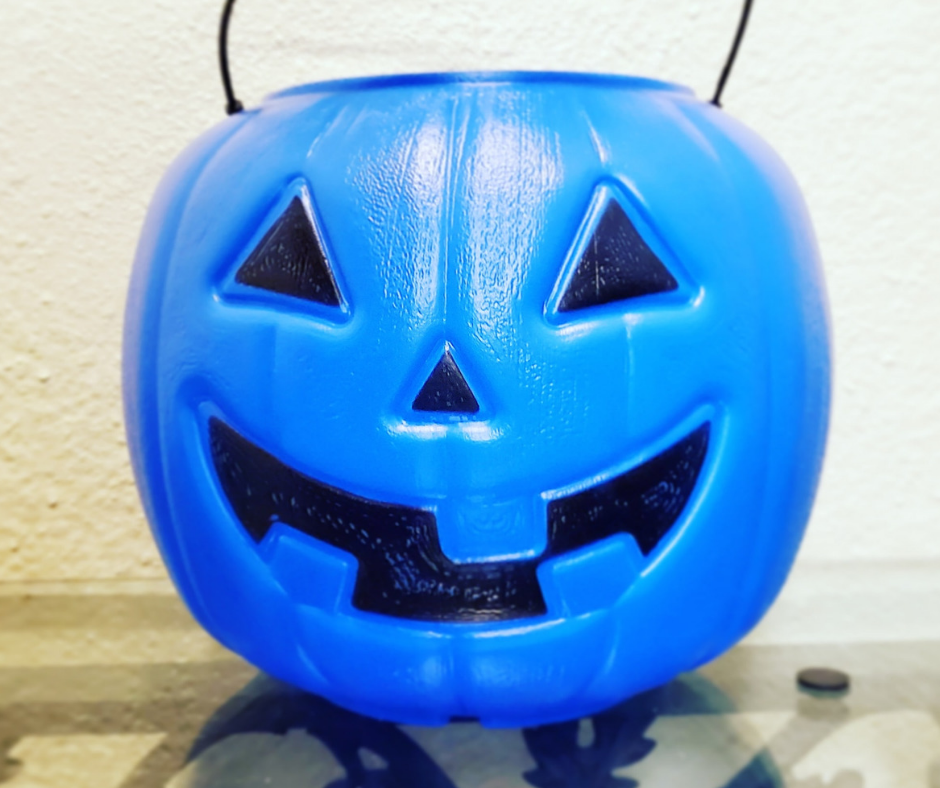
I’ve seen a couple of articles this last week talking about the Blue Pumpkin initiative.
Similar to the Teal Pumpkin program that alerts parents to the houses that have candy alternatives for children who have food allergies; the blue pumpkin is supposed to provide an unofficial signal that the child that carries it, will be on the Autism spectrum. The reports about the origins were a little vague, but each news outlet had the intention of letting the public know what it meant if they saw a kid trick or treating with a blue pumpkin.
I thought this was a great idea, it seems like an easy way to convey to the public that even though a child doesn’t say those famous words for a treat or even make eye contact; that they want to be included and are having fun… even if it doesn’t appear that way.
Feeling good about this sentiment and this unofficial program, I started to read some of the comments that accompanied these articles and I was shocked, many people thought it was fake and made up by the media, others thought that by ‘outing’ their kids to the world about their diagnosis, it was the exact opposite of what they have been trying to provide for their kids…inclusion; so, I tried to inform myself.
I got lost in the internet and found out how this phenomenon of the Blue Pumpkin came to exist. It seems to have originally started last year by Alicia Plummer, a mom of an autistic 21 yr. old, who posted a picture of a plastic blue pumpkin on her facebook page. She announced that if anyone saw an adult dressed up to go trick-or-treating and he was holding said blue bucket, it was her son BJ;
“He enjoys Halloween, so please help keep his spirit alive and happy, share a piece of candy, spread awareness! These precious people are not ‘too old’ to trick-or-treat”.
She wanted a smooth, fun experience for her child at Halloween, and by carrying the blue bucket it seemed to convey that very sentiment.
Although this message was seen by so many last year, it has since gained more notoriety and taken on a life of its own, partly thanks to news outlets featuring other parents like Omairis Taylor (her facebook post was shared 200,000 times) who are going to try this technique for her non-verbal 3 yr. old son this year.
Many of the stories around the country were of parents excited to try out the blue bucket, they felt it was a dignified way to communicate with the public about their children with autism, and to debunk any negative interaction they may perceive at the door: whether it was their inability to express themselves (saying trick-or-treat), conveying to others that their children are not rude or unappreciative (saying please or thank you, eye contact) or that the older kid at the door wants to enjoy this exciting night with all the other kids.
Not all parents were on board with this unofficial initiative, not because they want their children to struggle door to door, but they want them exposed to communicating with others.
A parent in Philadelphia says the treat is a reward for her son when he tries to communicate with others, so it’s a lesson at every door. I understand that reasoning, because I try to make every interaction with others outside our family, a lesson in manners and social interaction.
Ultimately every child is different, every family is different, and we will use the techniques that work best for our own families.
Use the blue bucket….don’t use the blue bucket it is your choice….but at least you now KNOW what it stands for.









